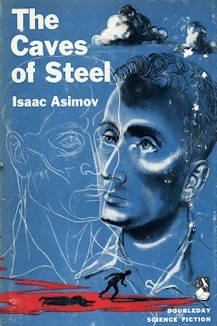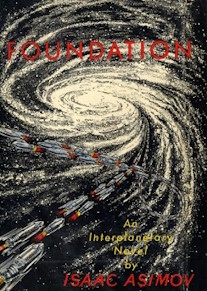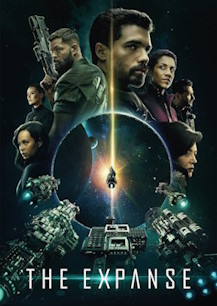
The classic “Robot” series by Isaac Asimov revolves around artificially intelligent worker robots with vast capabilities and how they might shape society. With the rise of robotics, automation and AI, these books, while fascinating originally, are now starting to look more like possible scenarios of how it might play out, rather than the purely distant-future fantasy they seamed when written (1950 through 1983). Asimov, however, seemed to expect the utilitarian humanoid capacity worker to evolve concurrently with the AI. And, while that may still well come, our society is already experiencing the beginning of the vast upheavals that AI will generate even without physical robots to take physical action on any of it. Just the massive restructuring of communication is already changing things. Long haul truckers, litigation document reviewers, financial market researchers, and many, many others are being displaced presently.
Asimov’s Robots are governed by the Three Rules of Robotics to limit their behavior and keep them in check. Obviously, these situations are not always clear-cut and that’s one of the plot devices investigated in these works.
- I, Robot (1950) is a collection of previously written short stories that lay the foundation for the Robot works
- The Caves of Steel (1954) is a mystery/detective story .. with robots. In this story, the quantity of robots is small.
- The Naked Sun (1956) is also a mystery. In the world on which it takes place, human population is strictly limited, so there are lots of robots that do most of the work.
- The Robots of Dawn (1983) the final Robot novel comes almost 30 years after, and is also a mystery. This time, the quantity of robots is more balanced than what we saw in Caves of Steel or Naked Sun.
- Robots and Empire (1984) is a collection of stories that tie together the Robot Series, the Galactic Empire Series, and the Foundation Series. I haven’t actually read this one.

The classic “Foundation” series by Isaac Asimov concerns “physchohistory”, the idea that, while the actions of individuals cannot be predicted, if the population is large enough then it becomes possible to predict outcomes with pure mathematics. The Empire, which spans an entire galaxy, is sufficiently large so it is possible to foresee the coming of a Dark Age which will last 30,000 years. Radical action must be taken!
- Foundation (1951) is a collection of previously written short stories that set the stage for the series
- Foundation and Empire (1952) second book of the classic trilogy that was also previously published as two separate novellas
- Second Foundation (1953) the final book of the classic trilogy composed of two previously written novellas that were not published
- Foundation’s Edge (1982) continues the story, written over 30 years after the previous works in the series.
There are also two prequels and another sequel written by Asimov, as well as a number of stories written by other authors, some authorized and some not. The Foundation series is Asimov’s most famous work (from a man who wrote literally hundreds of books).

The Expanse series by James S. A. Corey is a fairly recent publication that will almost certainly be considered a classic. There has already been a six season TV series. The story is told across 9 primary novels with a clean, satisfying story arc. There are also a number of short stories and novellas (most of which I have not read.)
As it starts, mankind has colonized much of the solar system, but has not gone beyond… which would be challenging, since there are no warp drives, inertial dampeners, or Heisenberg compensators. The laws of physics are a bitch. Then a bizarre, alien something (molecule? technology? life form?) is discovered that changes everything. Various factions of mankind that were already on the verge of open conflict now have something new to worry about — whether to fight off or fight over isn’t clear. But the situation changes rapidly and continues to evolve over the nine novels, always with interesting new mysteries to ponder. The characters are very good and the story is never dull.
The novels are, in order: Leviathan Wakes (2011), Caliban’s War (2012), Abaddon’s Gate (2013), Cibola Burn (2014), Nemesis Games (2015), Babylon’s Ashes (2016), Persepolis Rising (2017), Tiamat’s Wrath (2019), and Leviathan Falls (2021)
The TV series, first developed by SiFi, and then completed by Amazon, is also very well done, but I’d recommend reading the books first.
Clans of the Alphane Moon by Philip K. Dick (1964). This is the most wild Philip K. Dick book I’ve read, and one of the most wild from any author. Extremely funny, in a pretty dark sort of way, and bat-shit crazy. There is a somewhat normal (in a relative sense) married (or formally married) couple in a world of pathological crazies. We have paranoid intrigue, suicidal depression, interplanetary war, double agents, and human-like “simulacra.” It all builds to a zany climax to rivel the most carefully-engineered sitcom. And if that’s not enough to convince you, there’s also references to drug use, breast augmentation, nipple dilation, and the classic 1949 film “Kind Hearts and Coronets.”